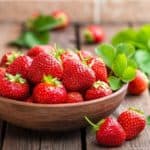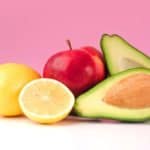As a gardener, it doesn’t get much better than planting seeds and seeing the vegetables grow back year in, year out.
Mose fruits and herbs are perennial (endure and continue to grow for years), whereas the majority of vegetables are annuals. They are sown and harvested within a single growing season. However, there are a few veggies that are also perennial. Plant them once and you will have a crop every year from then on.

Compared to annual veggies, growing perennial crops tends to involve less labor and maintenance.
You don’t need to sow, prick out, and transplant the veggies every year. These plants don’t require as much pampering either such as feeding and watering regularly. These strong plants are usually very robust and can even withstand pests and diseases that kill off other annual crops.
So, what kind of veggies are annuals? Peppers, beans, and potatoes are just a few. We would say tomatoes but, technically, these are a fruit. These “vegetables” live for just one growing season. This means you have to plant them every single year.
When it comes to true perennial vegetables, there aren’t that many to choose from. And, even when you think you have one, they can vary from one location to another. However, there are some that don’t need to be replanted every year in most regions.
To help you plan the coming year’s garden we are going to discuss what vegetables grow back every year without replanting. Such veggies may need to be cut back every year after harvesting and some may even need to be replanted in an overgrown area. But compared to annual vegetables, the perennial kinds are much easier to deal with.
Perennial Vegetables
Some examples of veggies that will grow back year in, year out are:
- Asparagus
- Radicchio
- Rhubarb
- Globe artichokes
- Certain members of the onion family
- Sorrel
Asparagus

This is a robust crop that can last for a few decades. One of the first veggies that can be harvested in the springtime, asparagus should be planted in an area with full sun that has moist, well-drained soil. Prepping the soil is critical as this veggie lives for so long. Mix 2 inches of a thicker layer of compost into the planting site to ensure healthy growth.
Although asparagus is expensive in many shops, it is hard to beat when picked and eaten fresh. It is generally ready to harvest two years after one-year-old crowns are planted. While this is a lengthy wait, it is certainly worth it. For the next 20 years or so, you can enjoy asparagus without too much maintenance.
Radicchio

Radicchio has a sharp flavor to it. Technically, this vegetable is a biennial. This means it grows for two years. Related to Belgian endive, radicchio is a type of chicory with dark red leaves and white veins that form a tightly grouped head. When looking at it, you may be forgiven for thinking it looks like romaine lettuce or cabbage.
This veggie needs to be grown in well-drained, fertile soil in full sun. The seeds should be sowed in the spring or autumn before the inner heads are harvested in late fall. This is when they are firm with white and red coloring. Then, leave the roots in the ground to enjoy another crop next year.
Rhubarb

That’s right, rhubarb is a veggie and not a fruit. Because you eat the stems and not the plant’s fruit, it can be deemed a perennial vegetable. The great thing about rhubarb is that it can keep producing for many years.
It needs to be planted in well-drained, moist soil and under full sun. Ensure it is in an area where it will not be disturbed. The crowns should be planted in early spring or as soon as the ground can be worked.
The central buds should be planted 2 inches below the soil line with the crowns 6 feet apart. Then, lay 2 inches of thick compost around the plants when the temperature reaches above 80 degrees Fahrenheit.
If any flower stalks develop, simply cut these off at the base. After six to eight years, the stalks may become thin so you should dig and divide the rhubarb during the spring or fall.
Globe Artichokes

These are architectural plants that boast large, grey leaves. Plant them in the back of your border or in your veg patch and they will look amazing. And, before the flowerheads open, you can cut them off. They are delicious in a range of dishes.
Artichoke should be grown in an area that enjoys at least six hours of direct sunlight every day. The soil must be moist and well-drained as this veggie needs consistent moisture for the best possible growth.
Members of the Onion Family
There are a few types of onions such as Egyptian Walking onions or fall-planted bunching that produce new crops every year. These should be grown in full sun with well-drained soil that has high levels of organic matter.
The Egyptian Walking onion is unusual as it “walks” around your vegetable patch. As its stems grow out, they fall over. If the soil conditions are perfect, these fallen bulbils then take root and new plants begin to grow. If the original plant is left unharvested, it will divide into several more, and, over the years, you will be inundated with a feast of onions.
Sorrel

This perennial herb has a lemony flair that is often used in stews, salads, sauces, and soups. There are two main sorrels that are grown known as the common sorrel (Rumex acetosa) and French sorrel (Rumex scutatus).
When looking at the plant, you will notice a resemblance to rhubarb and this is because they are relatives. The leaves are a great source of vitamin C but in large doses, the oxalic acid inside can cause health issues.
In Summary
These are some of the vegetables that will come back every year. There are others, including:
- Jerusalem artichokes
- Skirret
- Watercress
- Sea kale
- Chicory
All are great options for having fresh crops of delicious veggies every year from now on.




